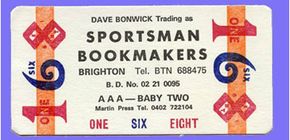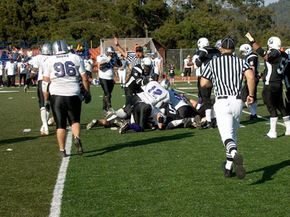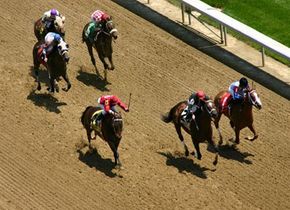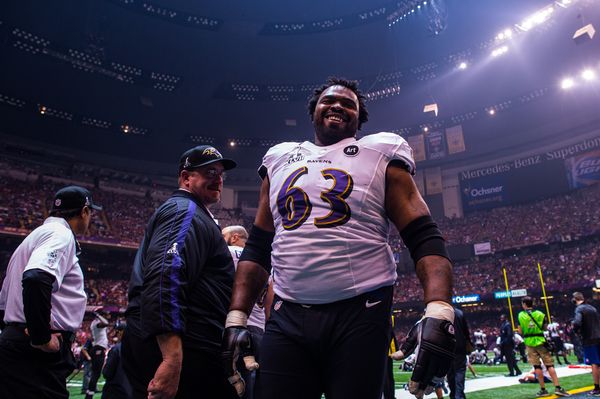Different sports have different systems for oddsmaking and betting. There are even different systems for the same sport, depending on what kind of game the bettor wants to play. But to understand any of these systems, you first have to understand the jargon.
Action - Action is simply betting activity. Phrases such as "I want in on the action" or "Show me where the action is" come from this term. Since betting on sports is illegal in many places, you can't always look up your local bookie in the phone book.
Handicap - In sports betting, "to handicap" is to give one team a points advantage in order to level the betting field.
Handle - The handle is the total amount of money wagered on bets. Super Bowl betting generates the biggest handle of the year for most bookies.
Sportsbook - An establishment that takes bets, also known as a book. An individual who takes bets is a bookie.
Juice - This is the percentage of all bets taken by the bookie as profit. The juice is also known as the vig, short for vigorish. Sometimes bookies take a straight percentage of the handle, but more often the vig is figured into the odds.
The spread - The point spread is used in high-scoring sports like football and basketball. It is basically a handicap used to make all games competitive in the eyes of bettors. The spread gives one team an advantage of a few points. Standard notation for the point spread shows the favored team first, followed by a negative number (the actual spread). The home team is shown in capital letters. So if Buffalo was playing against Green Bay in Green Bay, and they were favored to win by seven points, it would look like this:
If someone bets on Buffalo to win, Buffalo would actually have to win by more than seven points for the bet to pay off. It's as if Green Bay were given a seven-point lead at the start of the game.
The money line - In sports like baseball, scoring isn't high enough to use a point spread. The money line is used instead. A money line listing might look like this:
Sometimes the decimal point is left out, so 120 is the same as 1.20. If you want to bet on the favored team, the White Sox, you have to bet $1.20 for every $1 you want to win. If you want to bet on the underdog Astros, you have to bet $1 for every $1.10 you want to win. This is known as the dime line, because ten cents separate the favorite from the underdog. Most bookies offer a dime line, although it can increase to a 20 cent line or greater if one team is heavily favored.
If the money line seems confusing, think of it as a simple pricing system. You want to win a certain amount of money on your bet. Chances are greater that the favored team will win the game, so it costs more to bet on the favorite to win that amount than it costs to bet on the underdog.
Here's an example: Imagine that using the money line above with the White Sox and the Astros, you want to win about $100. If you place your bet on the favored White Sox, you will pay the bookie $120. If you win, you get your $120 back, plus $100 in winnings. If you lose, the bookie keeps your $120 (technically, bookies collect on losing bets after the game most of the time, but for our example we'll assume the bet is prepaid). If you bet $100 on the Astros, you'll get $110 in winnings if they win, and only lose $100 if they lose.
Pick'em - Sometimes money line games will be listed as "pick" or "pick'em." This means that the teams are considered equal, and the line on both teams is -1.10. Betting on either team requires $1.10 per $1 in potential winnings.
Pools, cards, and parlays - A parlay is just a combination bet. Instead of making five separate bets on five different games, the bettor places a single parlay bet, hoping he or she can predict the outcome of all five games. If any one of the games is a loser, the entire parlay is a loser. The payout is better for parlays, because the odds of successfully picking multiple winners are much tougher to beat [ref]. Most people are familiar with parlays through office betting pools or football cards. If you've ever paid $5 to select your winners from a list of that week's football games (sometimes using the spread, sometimes using the straight scores) in hopes of winning the weekly prize, then you have made an informal parlay bet. Office pools don't usually involve actual bookies beyond the person who organizes the pool, and no one takes juice from the pool. All the money is distributed to the winner or winners.
Next, we'll find out how oddsmakers set the line and figure out the spread.






